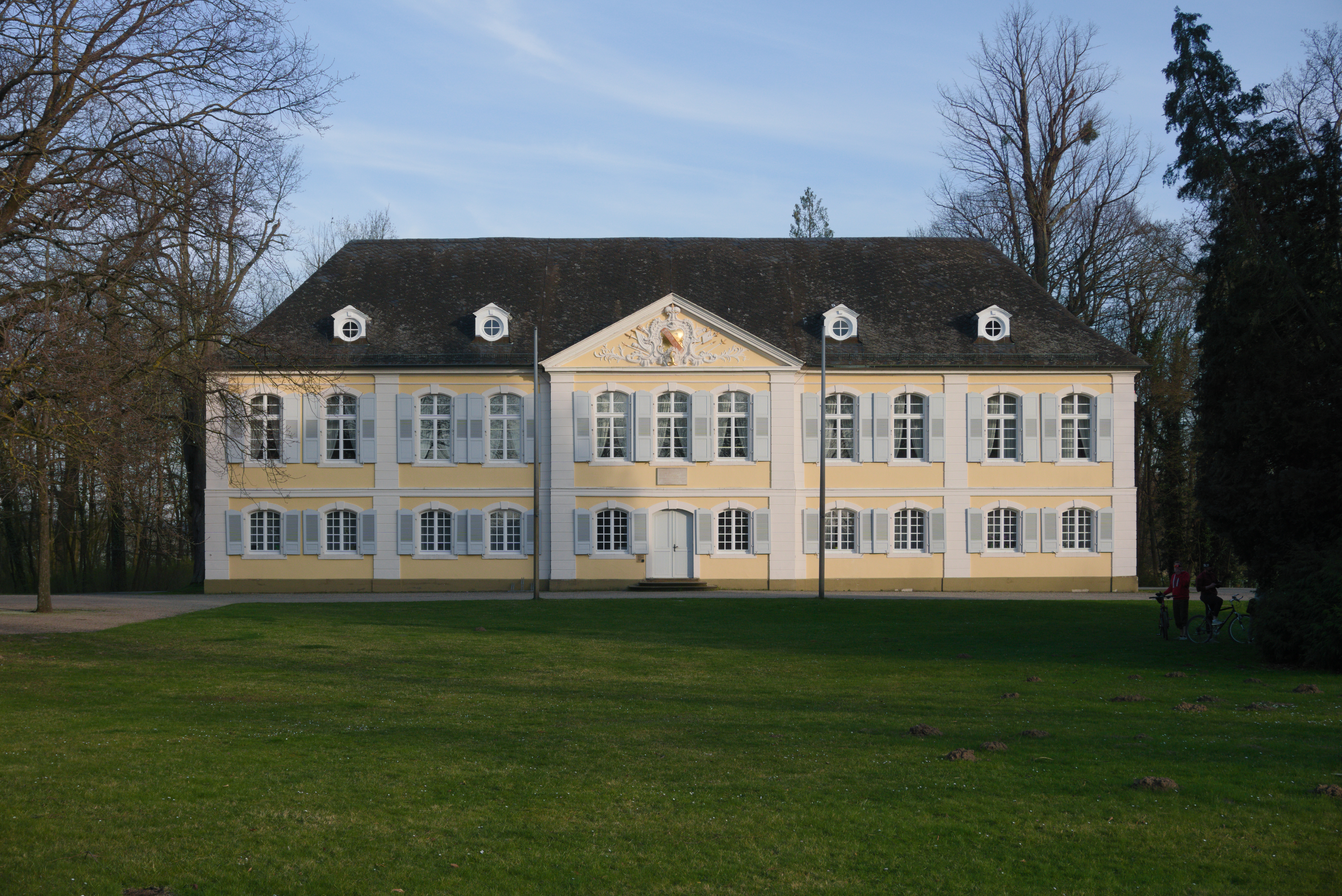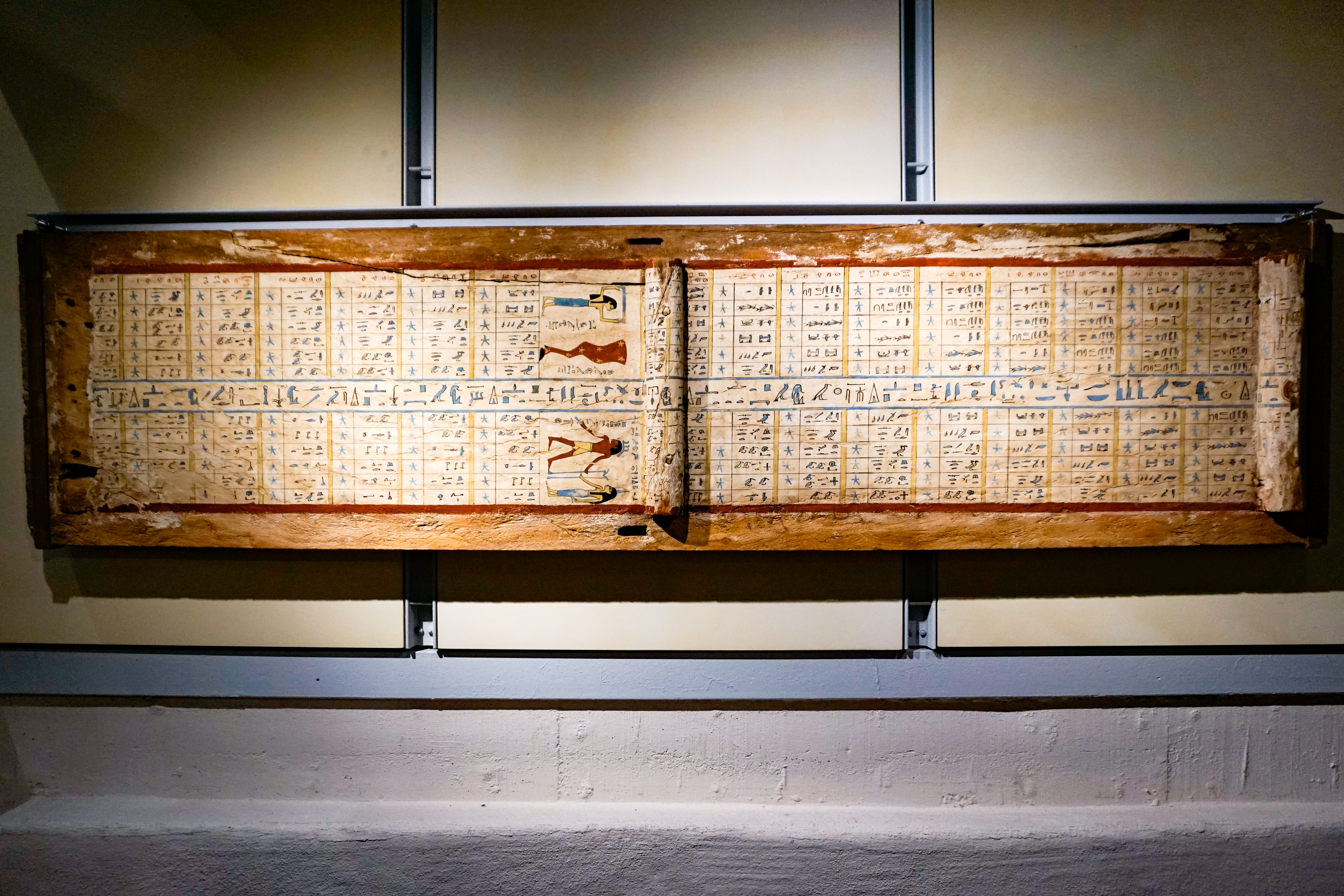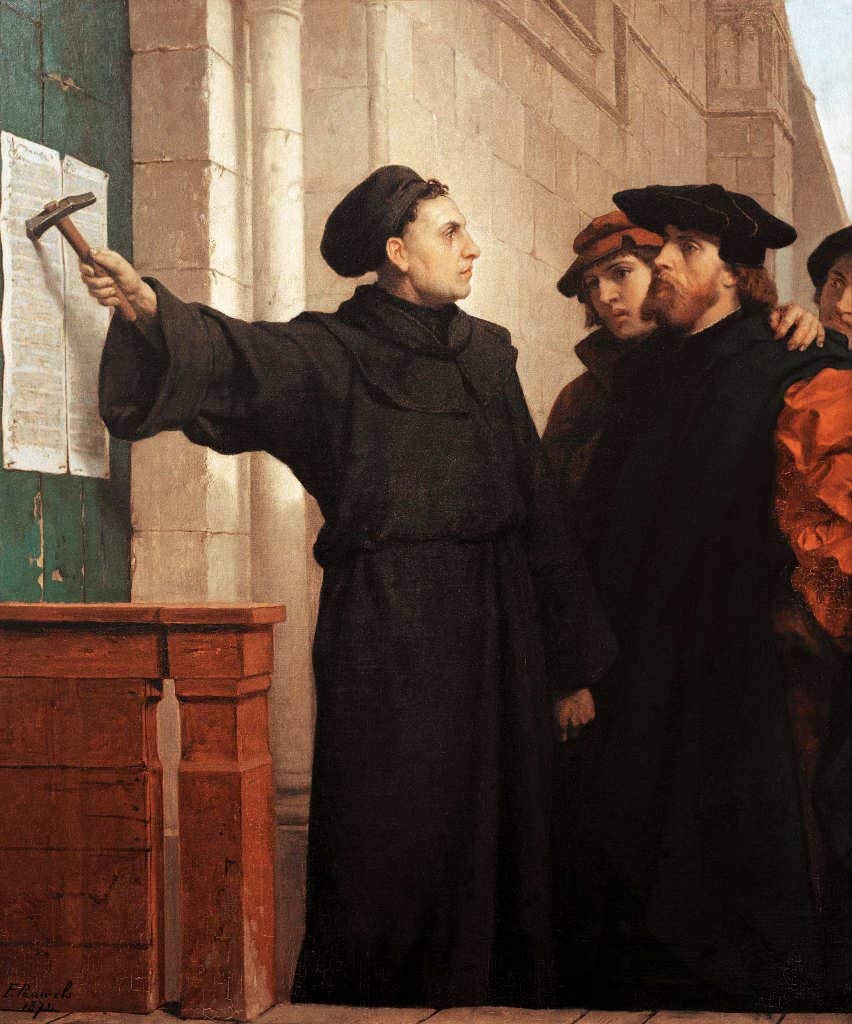|
Staffort Book
The Staffort Book is a religious-historical work that was printed in 1599 in the Staffort Castle printing house and is regarded as an attempt by Margrave Ernst Friedrich von Baden-Durlach to reconcile Lutheran and Calvinist doctrine. A translation into modern English is available. History Karl II of Baden-Durlach married the Protestant Princess Kunigunde of Brandenburg-Kulmbach in 1551. He converted to the Protestant doctrine and ordered the introduction of Protestant worship in the Margraviate of Baden-Durlach with the church order he issued on June 1, 1556. After his death in 1577, his son Ernst Friedrich von Baden-Durlach inherited the lower margraviate with the offices of Durlach, Mühlburg, Pforzheim, Graben and Staffort. He was a friend and patron of the sciences and is said to have enjoyed spending time in Staffort Castle. In 1584, he founded the Gymnasium Illustre, which was named ''Ernestinum'' after its founder. While he was brought up as a devout Lutheran at a y ... [...More Info...] [...Related Items...] OR: [Wikipedia] [Google] [Baidu] |
Huguenot
The Huguenots ( , ; ) are a Religious denomination, religious group of French people, French Protestants who held to the Reformed (Calvinist) tradition of Protestantism. The term, which may be derived from the name of a Swiss political leader, the Genevan burgomaster Besançon Hugues, was in common use by the mid-16th century. ''Huguenot'' was frequently used in reference to those of the Reformed Church of France from the time of the Protestant Reformation. By contrast, the Protestant populations of eastern France, in Alsace, Moselle (department), Moselle, and Montbéliard, were mainly Lutheranism, Lutherans. In his ''Encyclopedia of Protestantism'', Hans Hillerbrand wrote that on the eve of the St. Bartholomew's Day massacre in 1572, the Huguenot community made up as much as 10% of the French population. By 1600, it had declined to 7–8%, and was reduced further late in the century after the return of persecution under Louis XIV, who instituted the ''dragonnades'' to forcibly ... [...More Info...] [...Related Items...] OR: [Wikipedia] [Google] [Baidu] |
1599 Books
__NOTOC__ Events January–March * January 8 – The Jesuit educational plan, known as the '' Ratio Studiorum'', is issued. * January 22 – The Acoma Massacre begins in what is now northern New Mexico in the U.S., as Santa Fe de Nuevo Mexico viceroy Juan de Oñate leads 70 armed Spanish soldiers against the indigenous Keres people at Aak'u (the Acoma Pueblo) near what is now Albuquerque, New Mexico. In three days, 500 Acoma men and 300 women and children are killed by the Spanish. * February 20 – On Shrove Tuesday, the earliest known performance of William Shakespeare's play ''As You Like It'' is given, presented at Richmond Park for Queen Elizabeth. * February 21 **At Southwark, near London on the south bank of the River Thames, the land upon which the Globe Theatre will be built is leased by Nicholas Brend to a team of investors led by William Shakespeare, Thomas Pope, actors Cuthbert and Richard Burbage, and three others. ** Lorenzo Sauli becomes the new ... [...More Info...] [...Related Items...] OR: [Wikipedia] [Google] [Baidu] |
World Council Of Churches
The World Council of Churches (WCC) is a worldwide Christian inter-church organization founded in 1948 to work for the cause of ecumenism. Its full members today include the Assyrian Church of the East, most jurisdictions of the Eastern Orthodox Church (including the Ecumenical Patriarchate of Constantinople), the Oriental Orthodox Churches, the Union of Utrecht, the Lutheran World Federation, the Anglican Communion, the Mennonite churches, the World Methodist Council, the Baptist World Alliance, the World Communion of Reformed Churches, several Pentecostal churches, the Moravian Church, and the Malankara Mar Thoma Syrian Church. Notably, the Catholic Church is not a full member, although it sends delegates who have observer status to meetings. The WCC describes itself as "a worldwide fellowship of 352 global, regional and sub-regional, national and local churches seeking unity, a common witness and Christian service". It has no head office as such, but its administrative ce ... [...More Info...] [...Related Items...] OR: [Wikipedia] [Google] [Baidu] |
Manfred G
''Manfred: A dramatic poem'' is a closet drama written in 1816–1817 by Lord Byron. It contains supernatural elements, in keeping with the popularity of the ghost story in England at the time. It is a typical example of Gothic fiction. Byron commenced this work in late 1816, a few months after the famous ghost-story sessions with Percy Bysshe Shelley and Mary Shelley that provided the initial impetus for '' Frankenstein; or, The Modern Prometheus''. The supernatural references are made clear throughout the poem. ''Manfred'' was adapted musically by Robert Schumann in 1848–1849, in a composition entitled '' Manfred: Dramatic Poem with Music in Three Parts'', and in 1885 by Pyotr Ilyich Tchaikovsky in his '' Manfred Symphony''. Friedrich Nietzsche was inspired by the poem's depiction of a super-human being to compose a piano score in 1872 based on it, "Manfred Meditation". Background Byron wrote this "metaphysical drama", as he called it, after his marriage to Annabella Mi ... [...More Info...] [...Related Items...] OR: [Wikipedia] [Google] [Baidu] |
Reichsdeputationshauptschluss
The ' (formally the ', or "Principal Conclusion of the Extraordinary Imperial Delegation"), sometimes referred to in English as the Final Recess or the Imperial Recess of 1803, was a resolution passed by the ' (Imperial Diet) of the Holy Roman Empire on 24 February 1803. It was ratified by the Francis II, Holy Roman Emperor, Emperor Francis II and became law on 27 April. It proved to be the last significant law enacted by the Empire before its dissolution in 1806. The resolution was approved by an Imperial Delegation (') on 25 February and submitted to the ' for acceptance. It was based on a plan agreed in June 1802 between France and Russia, and broad principles outlined in the Treaty of Lunéville of 1801. The law secularized nearly 70 ecclesiastical states and abolished 45 imperial cities to compensate numerous German princes for territories to the west of the Rhine that had been annexed by France as a result of the French Revolutionary Wars. Secularization and mediatization ... [...More Info...] [...Related Items...] OR: [Wikipedia] [Google] [Baidu] |
Stutensee
Stutensee is a town in northern Karlsruhe district in Baden-Württemberg, Germany. It was founded in 1975 by the voluntary connection of the four villages of Blankenloch (with Büchig), Friedrichstal, Spöck and Staffort. In the meantime it has become a lively city with more than 23,000 inhabitants. Palace of Stutensee The Palace of Stutensee is the geographic center and namesake of the city. It was built in 1749 by Charles Margrave of Baden, by the 1,000-year-old oak trees. Today an institution of the Landeswohlfahrtsverband is located here. Geography The city is situated between Karlsruhe and Bruchsal in the Upper Rhine region and its altitude is . History Stutensee was founded on 1 January 1975 when the four villages of Blankenloch (with Büchig), Friedrichstal, Spöck and Staffort were combined into one municipality. All parts of the town are old villages. Spöck was first mentioned in official documents as Speccha in 865, Staffort 1110 as Stafphort, Blankenloch 1337 a ... [...More Info...] [...Related Items...] OR: [Wikipedia] [Google] [Baidu] |
Neureut (Karlsruhe)
Neureut is the northernmost district of Karlsruhe, Germany. It was the most populous rural community of Baden-Württemberg before being incorporated into Karlsruhe on February 14, 1975. Its population is about 18,920 people as of December 31, 2020. The district is further divided into ''Südlicher Teil'', ''Nördlicher Teil'', ''Kirchfeld'' and ''Heide''. History Neureut is recorded as having been founded in 1260, under the rule of Rudolf I, Margrave of Baden-Baden. In 1699, Frederick VII, Margrave of Baden-Durlach founded a church for 58 families of Huguenot refugees from nearby France. During World War II, Neureut was heavily damaged by American planes. After the war, many American military bases were established in Germany, including one in Neureut in 1959. The American military presence there lasted until 1995. In 1975, Neureut was incorporated into Karlsruhe despite local opposition. Transport Neureut is served by the S1 and S11 lines of the Karlsruhe Stadtbahn The Kar ... [...More Info...] [...Related Items...] OR: [Wikipedia] [Google] [Baidu] |
George Frederick, Margrave Of Baden-Durlach
George Frederick of Baden-Durlach (30 January 1573 – 24 September 1638) was Margrave of Baden-Durlach from 1604 until his abdication in 1622. He also ruled Baden-Baden. He was the third son of margrave Charles II of Baden-Durlach and his second wife, Anna of Veldenz. He was the youngest of eight children and was only four years old when his father died. He succeeded his brother Ernest Frederick as margrave in 1604. He also continued his brother's occupation of Baden-Baden. George Frederick was a prominent member of the Protestant Union. He raised an army of 12,000 men at the beginning of the Thirty Years' War in 1618. When Catholic League forces under General Tilly approached Baden in 1622 (Palatinate campaign), he marched against them, but came too late for the Battle of Mingolsheim. Setting off to pursue the retreating Catholics, he was defeated at the Battle of Wimpfen, and his army was destroyed, a few days later. In 1627 he joined the Danish army. He died at S ... [...More Info...] [...Related Items...] OR: [Wikipedia] [Google] [Baidu] |
University Of Tübingen
The University of Tübingen, officially the Eberhard Karl University of Tübingen (; ), is a public research university located in the city of Tübingen, Baden-Württemberg, Germany. The University of Tübingen is one of eleven German Excellence Universities. The University of Tübingen is especially known as a centre for the study of plant biology, medicine, law, archeology, ancient cultures, philosophy, theology, religious studies, humanities, and more recently as a center of excellence for artificial intelligence. The university's noted alumni and faculty include presidents, a pope, EU Commissioners, judges of the Federal Constitutional Court, and Johannes Kepler. The university is associated with eleven List of Nobel laureates, Nobel laureates, especially in the fields of medicine and chemistry. History The University of Tübingen was founded in 1477 by Count Eberhard I, Duke of Württemberg, Eberhard V (Eberhard im Bart, 1445–1496), later the first Duke of Württemberg ... [...More Info...] [...Related Items...] OR: [Wikipedia] [Google] [Baidu] |
Reformation
The Reformation, also known as the Protestant Reformation or the European Reformation, was a time of major Theology, theological movement in Western Christianity in 16th-century Europe that posed a religious and political challenge to the papacy and the authority of the Catholic Church. Towards the end of the Renaissance, the Reformation marked the beginning of Protestantism. It is considered one of the events that signified the end of the Middle Ages and the beginning of the early modern period in Europe. The Reformation is usually dated from Martin Luther's publication of the ''Ninety-five Theses'' in 1517, which gave birth to Lutheranism. Prior to Martin Luther and other Protestant Reformers, there were Proto-Protestantism, earlier reform movements within Western Christianity. The end of the Reformation era is disputed among modern scholars. In general, the Reformers argued that justification (theology), justification was sola fide, based on faith in Jesus alone and n ... [...More Info...] [...Related Items...] OR: [Wikipedia] [Google] [Baidu] |
Heidelberg
Heidelberg (; ; ) is the List of cities in Baden-Württemberg by population, fifth-largest city in the States of Germany, German state of Baden-Württemberg, and with a population of about 163,000, of which roughly a quarter consists of students, it is List of cities in Germany by population, Germany's 51st-largest city. Located about south of Frankfurt, Heidelberg is part of the densely populated Rhine-Neckar, Rhine-Neckar Metropolitan Region which has its centre in Mannheim. Heidelberg is located on the Neckar River, at the point where it leaves its narrow valley between the Oden Forest and the Kleiner Odenwald, Little Oden Forest, and enters the wide Upper Rhine Plain. The old town lies in the valley, the end of which is flanked by the Königstuhl (Odenwald), Königstuhl in the south and the Heiligenberg (Heidelberg), Heiligenberg in the north. The majority of the population lives in the districts west of the mountains in the Upper Rhine Plain, into which the city has expan ... [...More Info...] [...Related Items...] OR: [Wikipedia] [Google] [Baidu] |





